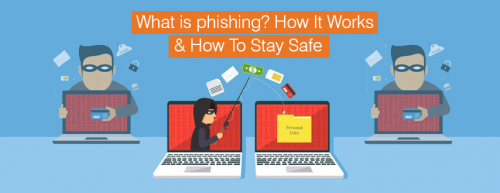

2018/07/11 IT & Cyber-Security Solutions 5128 visit(s)
Ctelecoms

Today, our email inboxes are flooded with spam, junk, and other unproductive information that’s not relevant to our business. On top of the useless emails we get, there’s also malicious activity, of course, because Email is one of the most common entry points for attacking an enterprise. Several types of email attacks have proven effective for evil doers. These attacks require minimal resources to launch, yet are difficult to defend against. But enterprises can minimize the risk from email-based attacks with a few preventative security controls.
Phishing is a cyber-attack that uses disguised email as a weapon, which serves as a powerful fraudulent attempt by cybercriminals to obtain your private information. Phishing scams often come in the guise of email messages designed to appear as though they are from legitimate sources. The goal is to trick the email recipient into believing that the message is something they want or need — a request from their bank, for instance, or a note from someone in their company — and to click a link or download an attachment.
What really distinguishes phishing is the form the message itself takes: the attackers masquerade as a trusted entity of some kind, often a real or plausibly real person, or a company the victim might do business with.
Although phishing is one of the oldest types of cyberattacks, dating back to the 1990s, it is still one of the most widespread and pernicious, with phishing messages and techniques becoming increasingly sophisticated.
Nobody wants to fall victim to a phishing scam. There’s a good reason that such scams will continue, though: They are successful enough for cybercriminals to make massive profits. Fortunately, there are ways to avoid becoming a victim yourself. Here are 5 basic guidelines in keeping yourself safe:
1. Keep Informed About Phishing Techniques – New phishing scams are being developed all the time. Without staying on top of these new phishing techniques, you could inadvertently fall prey to one. Remember to educate your employees, as well. Keep your eyes peeled for news about new phishing scams. By finding out about them as early as possible, you and your staff will be at much lower risk of getting snared by one.
2. Think before you click: Always check the spelling of the emails you receive as well as the URLs (for you might be subtly sent to a different website with identical design) before you click or enter sensitive information.
3. Always be careful and skeptical: If you receive an email from a source you know but it seems suspicious, contact that source with a new email, rather than just hitting reply!
4. Careful where you enter information: most of the phishing emails will direct you to pages where entries for financial or personal information are required. An Internet user should never make confidential entries through the links provided in the emails. Make it a habit to check the address of the website. Do not trust any popups, no matter how fancy. And keep in mind that a secure website always starts with “https”.
5. Don’t just publish everything: never post personal data, like your birthday, vacation plans, or your address or phone number, publicly on social media, as this will give free help for cybercriminals to launch a more successful phishing plan.
For your organization to stay secure and protected against email attacks, your company's IT security department should also implement a number of proactive measures to protect the organization, including:
• "Sandboxing" inbound email, checking the safety of each link a user clicks.
• Inspecting and analyzing web traffic.
• Pen-testing your organization to find weak spots and use the results to educate employees.
• Rewarding good behavior, perhaps by showcasing a "catch of the day" if someone spots a phishing email.
But.. if you want to enjoy full protection against Phishing, Spoofing malware, ransomware, and all current and emrging email threats, we've got a superb, cost-effective solution for you: Cisco Cloud Email Security!
Have peace of mind knowing that no matter how clever the hackers' emerging techniques might be, you have a super-powerful email security solution that maintains a holistic 24/7 protection for your emails. It's Cisco Cloud Email security. Claim your free trial from Ctelecoms today.